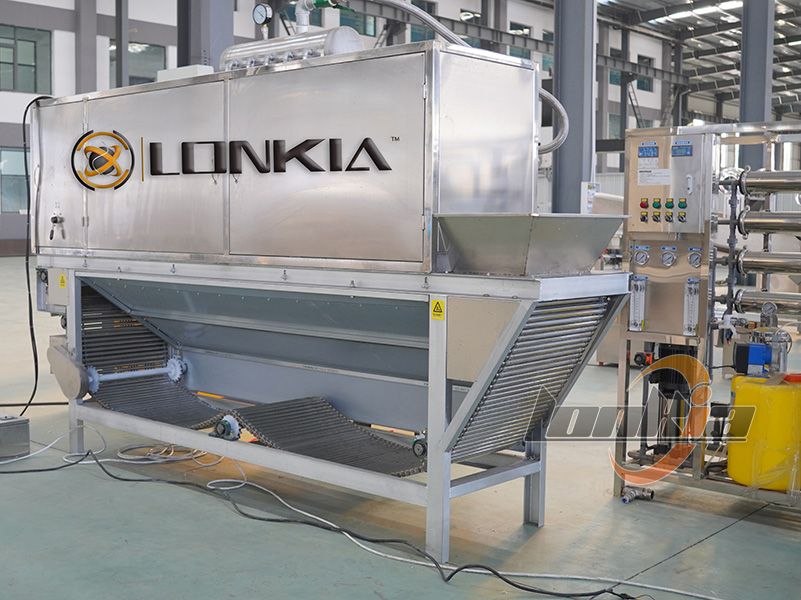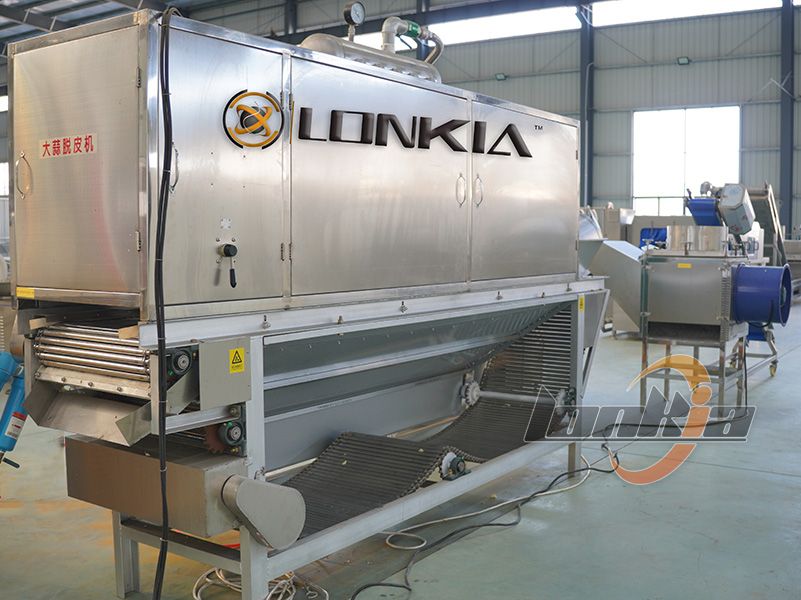Reducing garlic waste during the industrial garlic peeling process not only helps to increase productivity, but also reduces raw material costs. For garlic processors, reducing waste is key to improving profitability and optimizing production processes. This article will explore in detail how to reduce waste by optimizing the use of industrial garlic peelers.

Adjusting air pressure and peeling time
The air pressure and peeling time of an industrial garlic peeler directly affect the peeling effect. Excessive air pressure can lead to excessive peeling of the outer skin of the garlic, which may even damage the garlic cloves and increase waste. On the contrary, too low air pressure may lead to incomplete peeling and reduce efficiency. Therefore, adjusting the proper air pressure and peeling time is the first step in reducing waste. When in use, the operator can adjust the electric garlic peeler settings at the right time according to the type of garlic and the thickness of the outer skin to ensure the best peeling results.
Precise control of garlic feed volume
The control of garlic feeding quantity is also an important factor to reduce waste. Too much garlic put into the peeler at one time will result in overloading the machine, uneven peeling, and even a mixture of garlic skin and meat. Too little feed may lead to inefficient peeling, wasting time and energy. Therefore, it is recommended to check the feeding system regularly to ensure that the garlic is fed into the machine evenly and in the right amount.
Optimized peeling blade design
The garlic peeling machine design of the blades has a direct impact on the peeling effect. The sharpness, material and angle of the blades affect the peeling accuracy. Regular inspection and replacement of the blades to maintain their sharpness can effectively reduce garlic loss. If the blades are worn out, it is easy to cause too much peeling of the outer skin of garlic, wasting the garlic meat. Choosing high-quality blade material and reasonable blade angle design helps to achieve precise peeling and maximize the preservation of garlic's inner core.

Regular cleaning and maintenance
Keeping the industrial garlic peeler in a clean and well-maintained state ensures the proper functioning of all machine components and also helps to reduce waste. For example, regular cleaning of the air pressure system and checking of the piping and air valves can prevent uneven peeling or garlic damage due to poor airflow.
Choosing the right variety of garlic
Different varieties of garlic have different thicknesses of outer skin, which directly affects the difficulty of peeling. When using industrial garlic peeler, choosing the right variety of garlic can reduce the burden and waste of the machine. For example, garlic with thinner outer skin is easier to peel and reduce loss. Reasonable selection and adjustment of garlic varieties according to market demand can also make more efficient use of the peeling machine.
Reducing the waste of garlic in the peeling process needs to be optimized in several ways. By reasonably adjusting air pressure, precisely controlling the amount of feed, optimizing blade design, regular cleaning and choosing the right garlic varieties, companies can greatly improve peeling efficiency and reduce raw material waste, thus achieving higher production efficiency.

